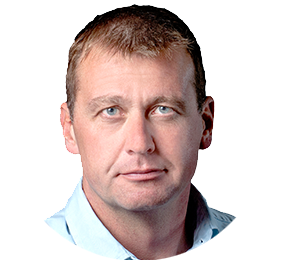Investors beware – the 1970s nightmare is back
It’s too late to worry about a return to the 1970s, writes Barry Norris, founder of Argonaut Capital – we’re already there. The more important question for investors now is: what can you do about it?


Picture the scene: inflation (measured by the retail prices index – RPI) is running at 11%; there’s an oil embargo and an energy security crisis, but the government has just discouraged new investment in indigenous, reliable energy through a populist windfall tax; and while the Bank of England has begun to raise interest rates, “real” (after-inflation) rates are still negative to a degree never seen before, locking in huge post-inflation losses for cash deposit savers.
We’ve also witnessed an unprecedented expansion in the money supply, whereby all recent new government borrowing for profligate handouts has been financed by the printing press. After a period of globalisation and financial stability which witnessed a record bull market in “long duration” assets (such as “growth” stocks and bonds with long maturities), the stockmarket has begun to turn down, led by the glamour stocks, while commodity prices, having been in slumber for a decade, are on the up, impervious to demand concerns.
This sounds like an investor horror movie from the 1970s – but it is, in fact, the investing reality of today. The 1970s redux has already arrived.
MoneyWeek
Subscribe to MoneyWeek today and get your first six magazine issues absolutely FREE

Sign up to Money Morning
Don't miss the latest investment and personal finances news, market analysis, plus money-saving tips with our free twice-daily newsletter
Don't miss the latest investment and personal finances news, market analysis, plus money-saving tips with our free twice-daily newsletter
What was so bad about the 1970s?
Between April 1972 and November 1974, the UK stockmarket fell by 70%, while from January 1973 to October 1974, US stock prices halved. Although the US and UK economies entered technical “real” GDP recessions during 1974-1975, the persistence of high inflation meant nominal GDP growth never fell below 8% in either country. This meant there was no collapse in corporate profits or rise in unemployment, and wages continued to rise at a double-digit pace. In other words, it was not the classic deflationary bust of the Great Depression (1929-1932) or the Great Financial Crisis (2008). It was something altogether different – and it is the template for the crisis we face today.
The stockmarket crashed in 1973-1974 because investors lost confidence in the long-term value of financial assets. As a result, they cut the prices they were willing to pay for the same future profits, since these were rapidly depreciating in value. The unhinging of price expectations can be traced back to the decision by Richard Nixon to close the “gold window” in the US in August 1971. This ended the ability of foreign central banks to redeem their dollars into gold at $35 an ounce (a price which had been fixed since 1934).
It had become clear that America no longer had enough gold to honour its potential foreign liabilities. A substantial and rising trade deficit meant that for every $1 of gold held at Fort Knox, there was now an estimated $9 held outside of the US. When the end of gold convertibility was officially declared irreversible in March 1972, this was the first time that the leading global power had adopted fiat money as a permanent measure. Such a worldwide fiat monetary system had no historical precedence. It still exists today.
This was the end of the fixed-exchange rate “Bretton Woods system”. Through the US adopting a unilateral competitive currency devaluation, confidence in the basis for post-war prosperity, led by soft US power embodied in the role of the dollar as the facilitator of global trade, was shaken. Leading global oil exporting countries took control of the oil price from the “Seven Sisters” – the Western oil majors. On the outbreak of the Yom Kippur War in October 1973, the Opec oil cartel imposed an oil embargo on the West, followed by a production cut, serial price hikes, then another embargo in 1979. From being fixed at just $1.80 a barrel, oil under its new masters rose to $25.80 by 1980. Gold meanwhile rose from $35 per ounce to $512. In other words, the world’s two most important commodities – gold and oil – both rose 15-fold over the decade (delivering average returns of 31% a year).
The Great Inflation
The problem for financial markets in the 1970s was high and persistent losses in the purchasing power of fiat currency. Inflation in the US was just 1% in 1964 but averaged more than 7% a year during the Seventies and peaked at 15% in 1980. UK inflation was only 1% in 1967 but averaged more than 13% a year during the decade and peaked at 27% in 1975. One pound in 1970 was worth just 30p by 1980; $1 was worth 50 cents. If you had been unlucky enough to buy the UK market at its 1972 peak and the US at its 1973 peak, you would still have made 47% in the UK and 21% in the US over the next decade in nominal terms. But in real terms it was a loss; 61% for UK and 48% for US investors.
If you had been equally unfortunate as to have bought the US market on its 16 September 1929 peak, your nominal losses over the next decade would have been worse (–59%), but because of deflation in the early 1930s, the value of fiat US dollar money went up (82% between 1930-1933, but only 6% over the decade). So in real terms the loss from US stocks in the 1970s was similar to the 1929-1939 decade (-50%). But for UK stocks, the 1970s were far worse than if you had bought the day before the Wall Street Crash. It was the Second Great Crash. “If the first crash was a dramatic leap from a 60-storey building, the second was like drowning in a bubble bath,” wrote the pseudonymous Adam Smith in his 1983 book Paper Money. “The bubble-bath drowning sounds less scary, but you end up just as dead.”
A troublesome addiction
The 1973-1974 crash had nowhere near the same impact on living standards, human misery and popular culture as its 1929-1933 counterpart, but for owners of wealth it was worse. Most people live in a nominal world, where they might be compensated for higher prices by rising wages and house prices. Inflation picks the pocket of the investor: the invisible crash of the 1970s was masked by the “money illusion” of inflation. Contrary to common myth, inflation hits those with capital surpluses – the few or the retired – worse than the many in the general working population.
Hence restoring price stability through deep and painful recessions is particularly difficult in modern democracies, which is why Milton Friedman compared the inflationary nation to the alcoholic: “The painful side effects are one reason why the alcoholic and the inflationary nation both find it difficult to end their addictions. But another reason, at least in the earlier stages of the disease, may be even more important: the absence of a real desire to end the addiction.”
Central bankers compared
Central bankers in the 1970s have been made historical scapegoats for failing to raise interest rates quickly enough to kill inflation. They first dismissed inflation as supply-led and thus transitory. They had no tools to manage “whack-a-mole” supply bottlenecks and so thought it would be fighting the wrong battle to raise rates to kill demand. That may sound familiar.
Yet, re-examining 1970s monetary policy, we find that for the first part of the decade, nominal rates were already very high and “real” rates (the gap between the central bank key interest rate for deposit savers and inflation) were positive. It was only after the real-terms economic recession of 1974-1975 that rates were cut and thus real rates went negative, as high inflation persisted despite the economic downturn. Although a more restrictive policy may have been more appropriate, in the US, real rates were only negative between 1973-1975.
The UK situation was more calamitous, though this should be put in the context of base rates which, in the early 1970s, were already at double-digit levels. Due to runaway inflation – occurring, again, during a real-terms recession – between 1973-1975, real interest rates were significantly negative in the UK. Following the 1976 sterling crisis that forced the Labour government to ask for a bail-out from the International Monetary Fund (IMF) – then the biggest loan that organisation had ever made – the Bank of England base rate was slashed from 15% in October 1976 to just 5% a year later. This was in keeping with the historical caricature of reckless central bank “stop-go” monetary policy, which stoked the need for far higher rates later.
Overall, interest rates in the 1970s rose gradually, then suddenly. They averaged more than 7% in the US and peaked at 20% in 1980. In the UK, they averaged 9% and peaked at 17%, also in 1980. But they were never as low as they are today, and were rarely negative in real terms. Indeed, the central bankers of the 1970s look like prudent stewards of fiat currency compared with their modern-day counterparts. At the time of writing, the key central bank rates in the UK and the US are still just 1% despite inflation (as measured by the consumer prices index – CPI) running at roughly 9% and 8% respectively. This has given us unprecedented negative real rates of 7%-10%, depending on which measure of inflation is used – for example, UK RPI, the measure widely used in the 1970s, is 11%. And despite record inflation in the eurozone, the European Central Bank deposit rate is still negative.
There was no quantitative easing (QE) in the 1970s. Today, central banks own staggering amounts of government debt. The Bank of England owns roughly 40% of all UK gilts and the Federal Reserve about a quarter of all US Treasuries, essentially financing all new government borrowing over the past decade. Central banks did as much QE in the response to Covid as over the previous 12 years and they kept going even when it was clear that meltdown had been avoided.
If governments can just print money, they are inclined to act less prudently and are less likely to consider the financial costs of policies, such as Covid lockdowns. Thus, in response to self-imposed economically-masochistic mobility restrictions, they introduced wartime levels of fiscal stimulus, having previously insisted on fiscal austerity as a balance to aggressive expansion of money supply. This occurred at the same time as many industries were supply constrained. There were fewer places for the new money created to go. The result was a massive economic and stockmarket boom, with inflation out of control.
Deglobalisation and decarbonisation
Inflation also occurs because of too little supply as well as too much demand. For the past decade, public and private capital has been allocated almost exclusively to innovative technology and away from “old economy” industries, which the West has been content to outsource: manufacturing to China, fossil fuels to Russia and Opec. With these countries now rebelling against US hegemony – with security and price consequences reminiscent of the 1970s – the West now needs to desperately “insource” and rebuild its own industrial and commodity supply chains.
Western oil majors have now cut investment in looking for new oil reserves by more than two-thirds compared with a decade ago. The amount of oil that Western oil majors found last year fell to a record low of just 12% of their annual production – new oil and gas reserves equivalent to just 4% of current annual global demand. Less drilling means less supply, less energy security and higher oil and gas prices, as well as more political instability. Unless Western commodity producers invest in new supply, the prices of commodities such as oil will keep rising, and control of the world’s most important resources will be handed to countries that are largely hostile to the West. This supply-side response is being constrained by indulgent ESG (environmental, social and governance) investment dogma and Western governments’ failure to comprehend the inadequacies of renewable energy, which can never compete with the reliability of fossil fuels – and failure to invest in the only realistically scalable carbon-free alternative, nuclear.
The West has decided to replace an energy economy predominantly fuelled by historically cheap and reliable fossil fuels with a renewable energy economy. This requires huge capital expenditure and government subsidies. Once built, renewables produce low-quality, weather-dependent power that is inherently unreliable and economically inferior to fossil fuels, at the cost of a big proportion of national wealth. The energy transition has been happening at breakneck speed before the technology exists to ensure it can be done successfully, and at a scale and a cost that is not financially ruinous. It places a high regard on carbon-free energy and a very low value on power grids being able to turn energy on and off, depending on demand. This will result in a glut of cheap power when the wind blows, but more expensive and unreliable power on average. This is inflationary and risks the deindustrialisation of Europe. As to how investors can prepare and protect themselves, we look at some ideas in the box below.
What you should invest in as the 1970s return
In recent times, whenever the West and its financial markets have been in trouble its central banks have come to the rescue with more cheap money. This is no longer an option. As a result, we are in a structural bear market for most asset prices. The end of the era of free money means the end of the “almost everything” bull market. It also means structurally higher volatility, since central banks will no longer cushion downside in asset prices to the same extent. Investors should diversify away from passive and traditional long-only funds that are solely dependent on market direction and consider those that can also “short” stocks to hedge market risk, such as the Argonaut Absolute Return Fund, which I both manage and invest in.
As in our recent past, the 1960s saw growth stocks soar – the “go-go” years – when interest rates and inflation were low and the global economy booming. But the glamorous buy-and-hold stocks of the 1960s – such as IBM, Polaroid and Xerox – were terrible investments in the 1970s. It wasn’t because their profits collapsed, but because investors would no longer pay high valuations for future profits, given that inflation made their value so uncertain. Investors now should invest in the opposite of capital-hungry, unprofitable growth stocks – that is, low-duration equities that return capital to shareholders. This should result in a renaissance in equity income investing. On this front, I also manage and invest in the Argonaut European Income Opportunities Fund.
We’ve also seen how the 1970s hosted a bull market for commodities and a bear market for everything else. Commodities can thus provide diversification for portfolios. We believe there are exceptional opportunities for investors in commodity stocks over the next decade – and lots of tired investments everywhere else. The funds already mentioned have high, actively-managed commodity weightings. Our biggest position currently is in Belgian oil tanker company Euronav, which is subject to a takeover offer by Norwegian peer Frontline, which will create an industry behemoth. As Europe weans itself off Russian oil, this will create more tanker mileage since oil will have to be imported by ship from further away.
The standout specific industry opportunity is currently in the oil services industry – that is, in companies that help oil producers find hydrocarbons and ramp up production. This industry needs to boom to resolve the global energy supply bottleneck: we are particularly enthused by opportunities in companies geared to cheap US Henry Hub gas production and its export to Europe. The best index to track over the next decade, in my view, will be the PHLX Oil Service Index (OSX), a market-weighted index of companies in the oil services sector. This will come as a great surprise to those who have written off fossil fuels as a sunset industry, which includes most of the institutional fund management industry.
Those interested in more detail on the comparisons between investing in the 1970s and today, should watch our “Stockumentary” video on the 1970s redux (youtu.be/5jW3iaoV_RA?t=1) and listen to our podcast with Merryn (moneyweek.com/barry-norris-podcast).
SEE ALSO:
• We’re in a bear market – change the way you invest
Get the latest financial news, insights and expert analysis from our award-winning MoneyWeek team, to help you understand what really matters when it comes to your finances.
Barry Norris is the founder, CEO and CIO of Argonaut Capital Partners, and manages the Argonaut Absolute Return Fund and the Argonaut European Alpha Fund
-
 Five ‘bear traps’ to look out for this bonus season – and four ways to lessen the blow
Five ‘bear traps’ to look out for this bonus season – and four ways to lessen the blowMarch is the peak month for bonuses, but it can lead to tax and pension issues. We look at four ways to protect your hard-earned money.
-
 Saba pursues more closed-ended funds
Saba pursues more closed-ended fundsActivist investor Saba Capital Management could move against more UK closed-ended funds. Some trusts are taking pre-emptive action.
-
 The outlook for stocks is improving
The outlook for stocks is improvingThis is the best of times for investors, says Max King. Global risks are receding, but few have noticed.
-
 The building blocks for an income strategy: resilience, growth and diversification
The building blocks for an income strategy: resilience, growth and diversificationAdvertisement Feature Iain Pyle, Investment Manager, Shires Income plc
-
 Investment platforms: how to avoid sub 2% interest rates on cash holdings and secure a better deal
Investment platforms: how to avoid sub 2% interest rates on cash holdings and secure a better dealDo you know how much interest the cash balance in your investment portfolio, ISA or Sipp earns? We lift the lid on the best and worst interest-payers – and explain what you can do about it
-
 Rethinking ESG investing
Rethinking ESG investingAnalysis Sustainable ESG funds are coming under attack for a lack of focus. Investors need to be selective
-
 Can a woman deliver you better returns?
Can a woman deliver you better returns?Tips Women often make better stock pickers than men, delivering stronger returns for investors - but with fewer females managing funds, how can you make sure you take advantage of the feminist touch when picking funds? Kalpana Fitzpatrick on how to filter funds run by women and why it matters.
-
 Flat fees vs percentage fees - are you paying too much for your investments?
Flat fees vs percentage fees - are you paying too much for your investments?Analysis We investigate whether it’s better to choose an investment platform with flat fees, or whether percentage charges could work out cheaper.
-
 What is a dividend yield?
What is a dividend yield?Videos Learn what a dividend yield is and what it can tell investors about a company's plans to return profits to its investors.
-
 Fund platform launches low cost £4.99 a month service for small investors - we see how it compares
Fund platform launches low cost £4.99 a month service for small investors - we see how it comparesAdvice Aimed at investors with small investment pots of £30k or less, fund platform interactive investors has launched a low costs service - but is it any good and how does it compare to rivals?
